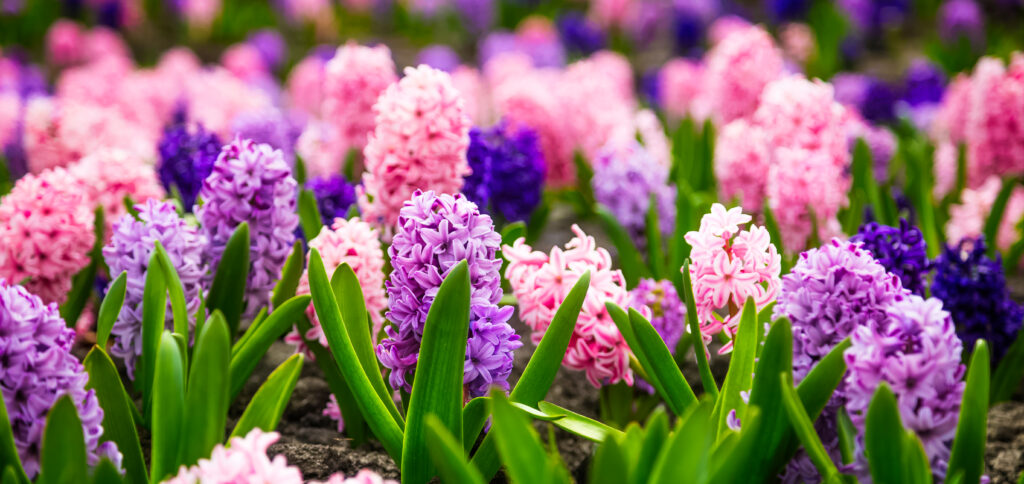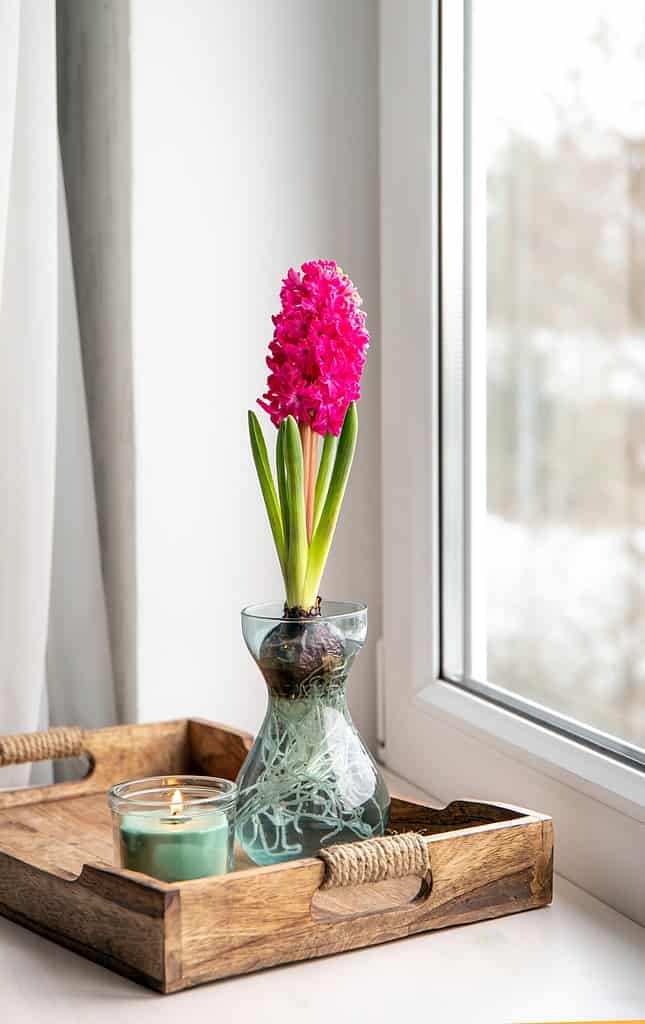You know that spring has sprung when that heady aroma of hyacinths hits the air. The vivid colors and fragrances usually seem to come around Easter time in the United States, when the frosts have mostly passed and daffodils are shining their vivid blooms across the spring garden, even as the last crocuses fade. But is that the only time hyacinths bloom?
How Many Types of Hyacinths Are There?

Hyacinths come in many shades of pink, purple, blue, white, and similar.
©Kateryna Mashkevych/Shutterstock.com
Three main types of hyacinths exist in the forms of single, double, and multiflora (multi-flower) hyacinths. There are many cultivars and variants, however, with something like 2000 cultivars produced in the Netherlands alone.
In a Nutshell: Typical Blooming Season for Hyacinths

Some hyacinths are so dark they’re almost black.
©Yada goemans/Shutterstock.com
Hyacinths are some of the earliest flowers to bloom in the early to mid-springtime. The leaves start to emerge about three weeks before the flowers open with a single stalk that may teach up to 10 inches in height. Occasionally, second and third stems develop and produce more blooms. Daffodils pop up about the same time as these spring beauties, but they’re beaten out by crocuses in most cases.
Not to Be Confused with Muscari

Muscari, known an grape hyacinth, are often confused for true hyacinth.
©Pavel Filatov/Shutterstock.com
Though they bare similar names, true hyacinths and muscari, or grape hyacinths, are not part of the same genus. Each is its own genus, though belong to the subfamily Scilloideae in the Asparagaceae family (asparagus). The gorgeously blooming plants both have similar needs but have different looks and uses.
Do Indoor Hyacinths Bloom Other Times?
When kept indoors, hyacinths may be forced to bloom at other times than the typical early spring window we’re used to. Because of this, the plant is a favorite among indoor gardeners as the fragrance enlivens a space and the vibrant colors brighten any space.
How to Force a Hyacinth

Red hyacinth (Hyacinthus orientalis) Jan Bos blooms in April.
©Sergey V Kalyakin/Shutterstock.com
Doing well as either hydroponic or soil-rooted plants, hyacinths may actually be forced to bloom early when grown indoors. The fragrant flowers may thrive in either growing medium.
Forcing with Soil
- With just the tips peeking out from the soil, plant the hyacinth bulb in a small pot that will remain indoors.
- Place the container in a cool, dark place for 10 weeks, in temperatures between 40 and 45 degrees to allow it the initial dormancy period required for blooming. Many folks place the pot into the refrigerator or purchase pre-chilled bulbs.
- As shoots begin to peek about an inch above the soil, remove the plants from the cooling place and put the pot into a sunny, warm window or under warming grow lights. Only put them out for a few hours at a time, gradually increasing the length of time they are in the warm light. Return them to the cool spot when not in the light.
- With caution, moisten the soil and maintain a low level of moisture, avoiding over-watering.
Forcing With Hydroponic Method

A red-pink hyacinth in bulb forcing vase shows what the hydroponic method looks like.
©FotoHelin/Shutterstock.com
- Using a bulb-forcing vase (an hourglass-shaped vase) full of water to the midsection, place the pre-chilled bulb root downward into the water.
- Find a warm place with indirect but bright light and place the vase in the area.
- Maintain the water level to the point of touching the base of the bulb.
- Every two weeks, change the water in the vase.
The photo featured at the top of this post is © Sergey V Kalyakin/Shutterstock.com
Thank you for reading! Have some feedback for us? Contact the AZ Animals editorial team.






